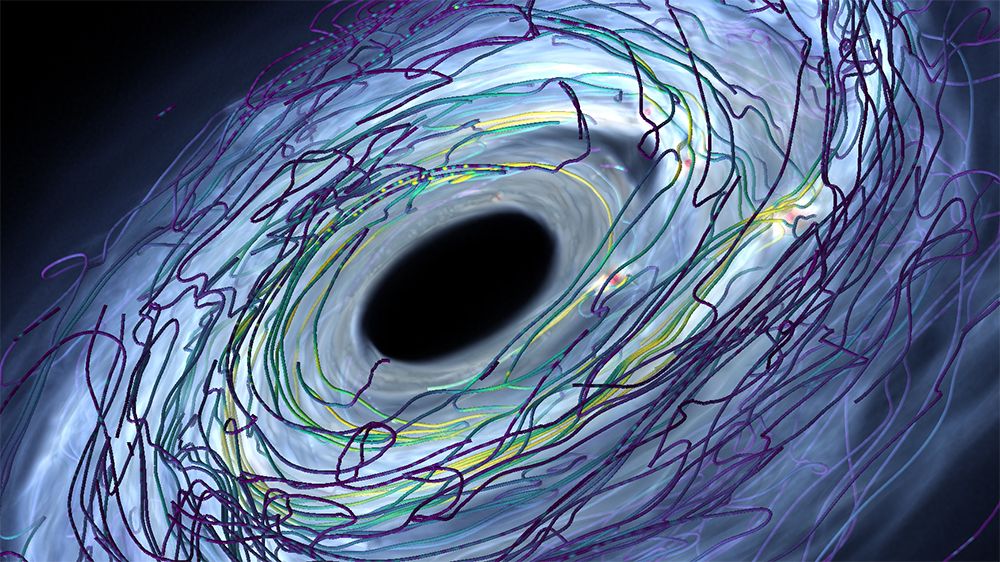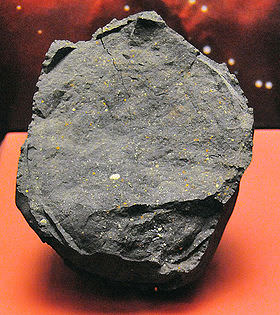The James Webb Space Telescope (JWST) continues to make amazing discoveries. This time in the constellation of Pictor where, in the Beta Pictoris system a massive collision of asteroids. The system is young and only just beginning its evolutionary journey with planets only now starting to form. Just recently, observations from JWST have shown significant energy changes emitted by dust grains in the system compared to observations made 20 years ago. Dust production was thought to be ongoing but the results showed the data captured 20 years ago may have been a one-off event that has since faded suggesting perhaps, an asteroid strike!
Continue reading “Webb Sees Asteroids Collide in Another Star System”When Uranus and Neptune Migrated, Three Icy Objects Were Crashing Into Them Every Hour!
The giant outer planets haven’t always been in their current position. Uranus and Neptune for example are thought to have wandered through the outer Solar System to their current orbital position. On the way, they accumulated icy, comet-like objects. A new piece of research suggests as many as three kilomerer-sized objects crashed into them every hour increasing their mass. Not only would it increase the mass but it would enrich their atmospheres.
Continue reading “When Uranus and Neptune Migrated, Three Icy Objects Were Crashing Into Them Every Hour!”Meteorites: Why study them? What can they teach us about finding life beyond Earth?
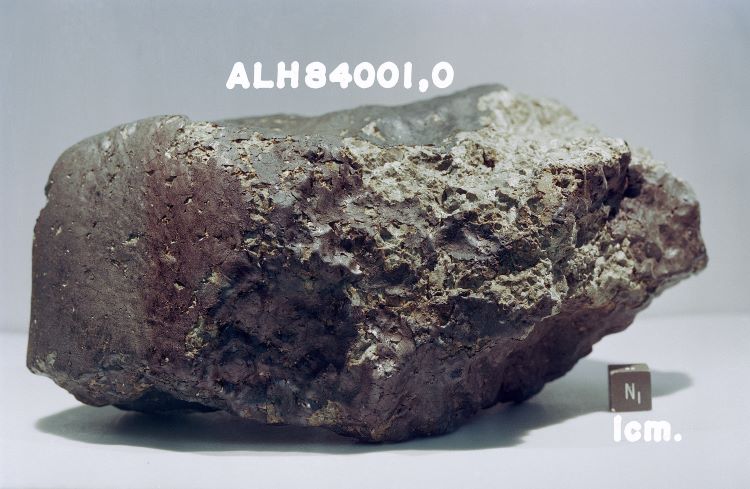
Universe Today has explored the importance of studying impact craters, planetary surfaces, exoplanets, astrobiology, solar physics, comets, planetary atmospheres, planetary geophysics, and cosmochemistry, and how this myriad of intricately linked scientific disciplines can assist us in better understanding our place in the cosmos and searching for life beyond Earth. Here, we will discuss the incredible research field of meteorites and how they help researchers better understand the history of both our solar system and the cosmos, including the benefits and challenges, finding life beyond Earth, and potential routes for upcoming students who wish to pursue studying meteorites. So, why is it so important to study meteorites?
Continue reading “Meteorites: Why study them? What can they teach us about finding life beyond Earth?”Magnetic Fields Help Shape the Formation of New Planets
In all of scientific modeling, the models attempting to replicate planetary and solar system formation are some of the most complicated. They are also notoriously difficult to develop. Normally they center around one of two formative ideas: planets are shaped primarily by gravity or planets are shaped primarily by magnetism. Now a new theoretical model has been developed by a team at the University of Zurich (UZH) that uses math from both methodologies to inform the most complete model yet of planetary formation.
Continue reading “Magnetic Fields Help Shape the Formation of New Planets”How Many of Earth’s Moons Crashed Back Into the Planet?

For decades, scientists have pondered how Earth acquired its only satellite, the Moon. Whereas some have argued that it formed from material lost by Earth due to centrifugal force, or was captured by Earth’s gravity, the most widely accepted theory is that the Moon formed roughly 4.5 billion years ago when a Mars-sized object (named Theia) collided with a proto-Earth (aka. the Giant Impact Hypothesis).
However, since the proto-Earth experienced many giant-impacts, several moons are expected to have formed in orbit around it over time. The question thus arises, what happened to these moons? Raising this very question, a team an international team of scientist conducted a study in which they suggest that these “moonlets” could have eventually crashed back into Earth, leaving only the one we see today.
Continue reading “How Many of Earth’s Moons Crashed Back Into the Planet?”Mission to Metal World Takes a Big Step Forward with Thruster Test
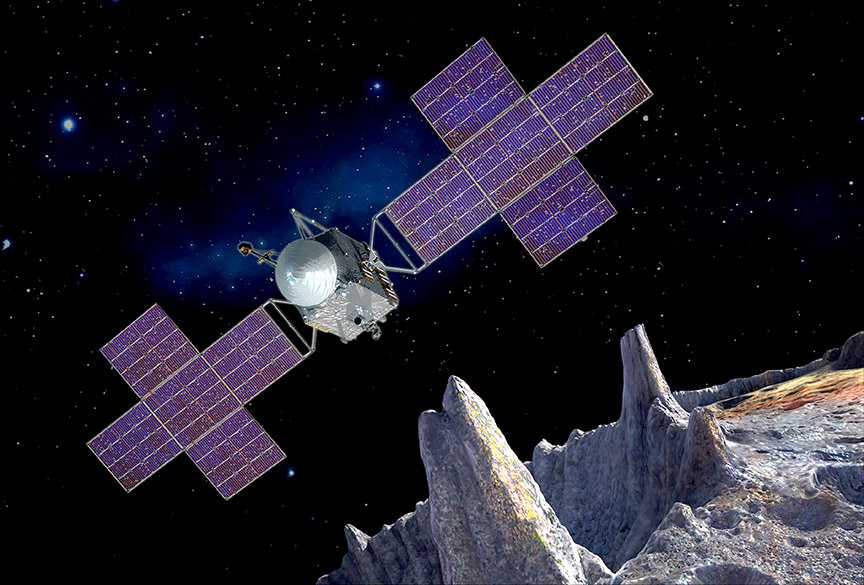
As NASA sets its sight on the next generation of space exploration, one area of focus is on missions that can teach us more about our Solar System. This was a major priority during the thirteenth round of NASA’s Discovery Program, which put out the call for proposals back in February of 2014. One of the proposals to make the cut was the Psyche mission, which will send an orbiter to the asteroid of the same name in 2o22.
This mission is unique in that it will entail visiting an asteroid that is entirely composed of metal, which scientists believe is the remnant core of an early planet. For the sake of the mission, NASA’s Glenn Research Center has been working hard to develop a cutting-edge, next-generation thruster that balances power with fuel efficiency. This thruster was recently subjected to tests designed to simulate its journey through space.
Originally discovered in 1852, the object known as 16 Psyche has been a source of fascination ever since astronomers were able to determine its composition. Unlike other asteroids that are largely carbonaceous (C-type), silicate (S-type), or composed of rock and metal (M-type), Psyche is the only asteroid to date that has been found to have an exposed nickel-iron surface.
Because of its unique nature, scientists have theorized that the metal asteroid is actually the core of a Mars-sized planet that formed during the early Solar System. This planet, they theorize, lost its outer layers after experiencing a massive collision, thus leaving an exposed core behind. The study of this asteroid is therefore expected to reveal a great deal about the interior of terrestrial planets and what powers their magnetic fields.
As David Oh, the mission’s lead project systems engineer, said in a recent NASA press release:
“Psyche is a unique body because it is, by far, the largest metal asteroid out there; it’s about the size of Massachusetts. By exploring Psyche, we’ll learn about the formation of the planets, how planetary cores are formed and, just as important, we’ll be exploring a new type of world. We’ve looked at worlds made of rock, ice and of gas, but we’ve never had an opportunity to look at a metal world, so this is brand new exploration in the classic style of NASA.”
The Psyche missions brings together researchers from Arizona State University and experts from NASA’s Jet Propulsion Laboratory. For the sake of designing the engine that would send their spacecraft to its destination, the joint Arizona-JPL team turned to NASA’s Glenn Research Center, which has been conducting research into Solar Electric Propulsion (SEP) for years.
SEP thrusters are essentially ion-engines that rely on electrically-charged inert gases (like xenon) to provide thrust. Like all Hall Effect ion-engines, this allows the thruster to provide a gentle, non-stop stream of thrust that gradually pushes a spacecraft up to greater and greater speeds. Such a system is ideal for deep-space missions where fuel-efficiency is a must.
As Carol Tolbert, the project manager for Psyche thruster testing at NASA Glenn, explained:
“For deep space missions, the type and amount of fuel required to propel a spacecraft is an important factor for mission planners. A SEP system, like the one used for this mission, operates more efficiently than a conventional chemical propulsion system, which would be impractical for this type of mission.”
The Psyche mission, which will be built jointly by JPL and Space Systems Loral (SSL), will use a SPT-140 Hall effect thruster that relies on solar power to provide electrical charges. The reduced fuel mass of this thruster will allow the mission to enter orbit around the metal asteroid while also providing additional space for the mission’s suite of scientific instruments.
These include a multispectral imager, a magnetometer, and a gamma-ray spectrometer, all of which will help the science team to obtain vital information on the asteroid’s origin, composition and history. The SEP also provides flexibility and robustness in the mission flight plan, since it will allow Psyche to get to its destination with greater speed and efficiency than conventional propulsion would allow for.
To test how the thruster performs during low-power operations, engineers at NASA Glenn placed the thruster into a space environment chamber designed to generate the low-pressures and temperatures it will encounter in space. As Carol explained:
“This mission will be the first to use a Hall effect thruster system beyond lunar orbit, so the tests here at Glenn, which had never been conducted before, were needed to ensure the thruster could perform and operate as expected in the deep space environment.”
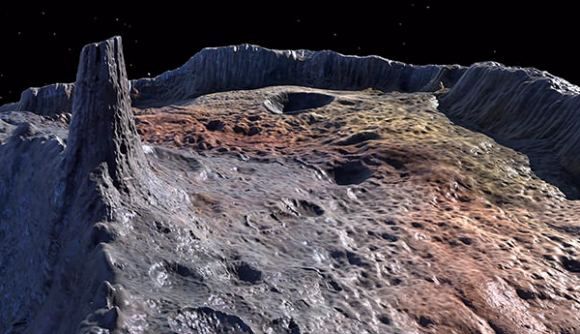
For decades, the Glenn center has used its compliment of chambers to simulate the conditions missions will encounter in space. However, this test is the first time that engineers have sought to determine how an SEP Hall-Effect thruster would fare. As Oh explained, this test is very important since it will simulate precisely how the spacecraft will fly, and the results have been encouraging so far:
“Glenn has a world-class facility that allowed us to go to very low pressures to simulate the environment the spacecraft will operate in and better understand how our thrusters will perform around Psyche. At first glance, the results confirm our predictions regarding how the thruster will perform, and it looks like everything is working as expected. But, we will continue to refine our models by doing more analysis.”
As the team works towards the mission’s proposed launch – which is scheduled for August 2022 – they will use the data collected at NASA Glenn to update their thruster modeling and incorporate it into mission trajectories. Once the spacecraft reaches its destination – the planned arrival will take place by 2026 – it is expected to reveal a great deal about this unique asteroid.
This data is also likely to teach us much about the history of the Asteroid Belt and the Solar System. If indeed 16 Psyche is the remnant of a Mars-sized planet that formed in the Main Belt, it could cause astronomers to rethink their notions of how the Solar System formed and evolved.
Further Reading: NASA
Comet ISON Hosted A Rare Kind Of Nitrogen, Hinting At Reservoirs In Young Solar System
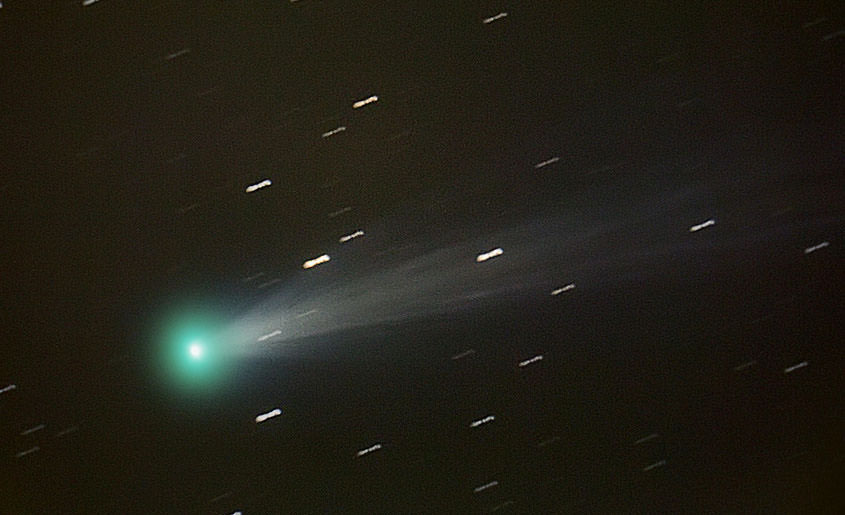
Comet ISON — that bright comet last year that broke up around Thanksgiving weekend — included two forms of nitrogen in its icy body, according to newly released observations from the Subaru Telescope.
Of the two types found, the discovery of isotope 15NH2 was the first time it’s ever been seen in a comet. Further, the observations from the Japanese team of astronomers show “there were two distinct reservoirs of nitrogen [in] the massive, dense cloud … from which our Solar System may have formed and evolved,” stated the National Astronomical Observatory of Japan.
Besides being pretty objects to look at, comets are considered valuable astronomical objects because they’re a sort of time capsule of conditions early in the universe. The “fresh” comets are believed to come from a vast area of icy bodies called the Oort Cloud, a spot that has been relatively untouched since the solar system formed about 4.6 billion years ago. Spying elements inside of comets can give clues as to what was present in our neighborhood when the sun and planets were just coming to be.
“Ammonia (NH3) is a particularly important molecule, because it is the most abundant nitrogen-bearing volatile (a substance that vaporizes) in cometary ice and one of the simplest molecules in an amino group (–NH2) closely related to life. This means that these different forms of nitrogen could link the components of interstellar space to life on Earth as we know it,” NAOJ stated.
You can read more details about the finding at the NAOJ website, or in Astrophysical Journal Letters.
Antarctic Micrometeorites Provide Clues to Solar System Formation
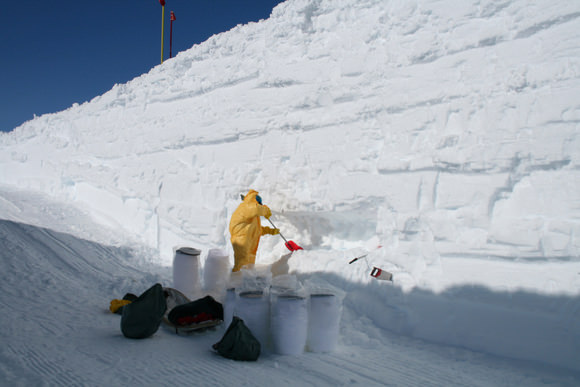
[/caption]
Researchers sifting through the pristine, cold snow in Antarctica have found micrometeorites that contain a bit of a surprise. The two micrometeorites, known as particles 19 and 119, contain extremely large amounts of carbon as well as excesses of deuterium. While this high organic content usually comes from distant interstellar space where molecular clouds gather to form new stars, other clues say these space rocks likely formed in our own solar system. This contradicts long-held notions that that all organic matter with extreme deuterium excesses have interstellar origins. Additionally, the meteorites could provide information about the protplanetary disk that formed our solar system.
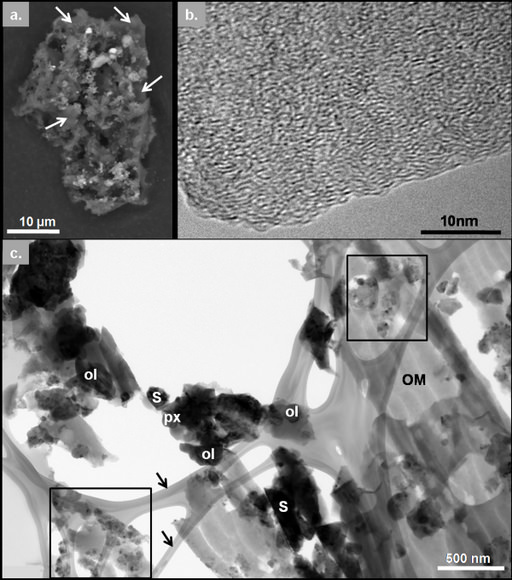
Jean Duprat and colleagues working at the CONCORDIA polar station located in central Antarctica recovered the two micrometeorites from 40 to 55 year-old snow. In investigating their make-up to determine where they came from, the researchers identified crystalline materials embedded in particles 19 and 119 that indicate that they formed close to our sun, and much more recently than predicted.
Their findings imply that these well-preserved micrometeorites contain a record of the cold regions of our sun’s ancient proto-planetary disk, which eventually led to the formation of our solar system.
More studies of these and other meteorites could possibly reveal details of the first deliveries of organic materials to the primitive Earth.
The findings have been published in this week’s edition of Science.
Meteorite Holds Millions of Unidentified Organic Compounds
[/caption]
New analysis of the famous Murchison meteorite that crash-landed in Australia over 40 years ago shows the space rock contains millions of previously unidentified organic compounds. Researchers say the meteorite, which is over 4.65 billion old – and likely older than our Sun — offers evidence that the early solar system likely had a higher molecular diversity than Earth, and may offer clues to the origins of life on our planet.
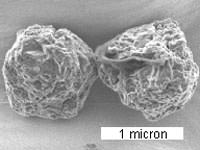
Philippe Schmitt-Kopplin from the Institute for Ecological Chemistry in Neuherberg, Germany and his colleagues examined the carbon-rich meteorite with high-resolution structural spectroscopy and found signals representing more than 14,000 different elementary compositions, including 70 amino acids in a sample of the meteorite.
Schmitt-Kopplin said that given the ways in which organic molecules with the same composition can be arranged in space, the meteorite should contain several million different organic chemicals.
The Murchison meteorite landed near a town of the same name in 1969. Witnesses saw a bright fireball which separated into three fragments before disappearing, leaving a cloud of smoke. About 30 seconds later, a tremor was heard. Many specimens were found over an area larger than 13 square km, with individual masses up to 7 kg; one, weighing 680 g, broke through a barn roof and fell in some hay. The total collected mass exceeds 100 kg.
Earlier analysis of the space rock revealed the presence of a complex mixture of large and small organic chemicals.
The meteor probably passed through primordial clouds in the early solar system, picking up organic chemicals. The authors of the paper suggest that tracing the sequence of organic molecules in the meteorite may allow them to create a timeline for the formation and alteration of the molecules within it.
The results of the meteorite study are published in the Proceedings of the National Academy of Sciences.



